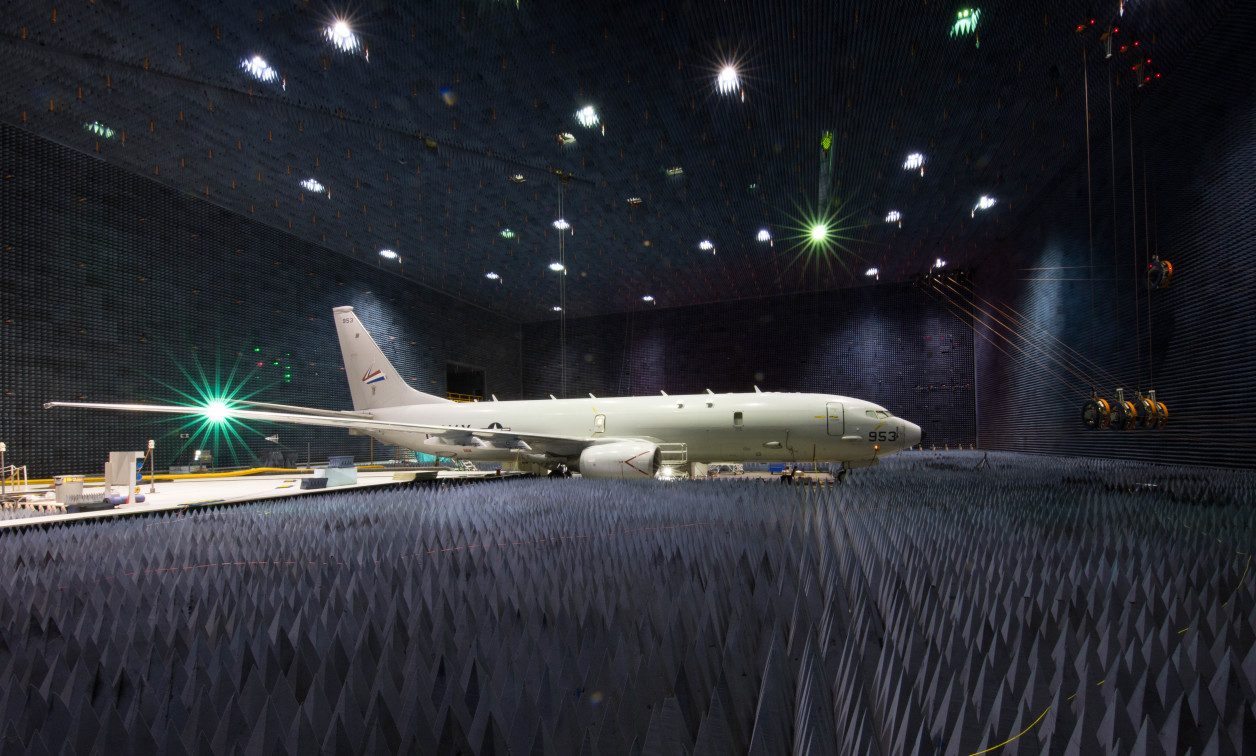P-8A Poseidon completes capabilities-based testing via LVC environment
NewsApril 17, 2018

PATUXENT RIVER, Md. A U.S. Navy team from the Naval Air Warfare Center Aircraft Division (NAWCAD) test and evaluation community created, developed, and completed capabilities-based testing and evaluation in a Live, Virtual and Constructive (LVC) environment for P-8A Poseidon mission systems.
The team determined that by using this LVC testing process, instead of testing inflight, the schedule and costs were reduced from six months and $12 million, to less than four weeks and $800,000. In addition, the data produced increased from an expected four hours to approximately 15 hours.
“There were two firsts in this test event,” says David DeMauro, senior engineer with the Integrated Battlespace Simulation and Test (IBST) department at the time. “It was the first time ever that a successful dynamic Identification Friend or Foe (IFF) Interrogator (IFFI) simulation was executed on the ground where both the test aircraft and the targets were moving in a simulated flight environment; and the first time that an entire P-8A was immersed in this type of dynamic LVC environment to test its mission systems on the deck.”
Aircraft platforms, networks, weapons, and sensors have grown in complexity over the past decade pushing engineers to test and evaluate in a live environment, officials say. LVC is the ability to integrate actual aircraft (live) with ground-based simulation computers (virtual) and with computer-generated threats (constructive).
Dynamic testing involves running the aircraft’s systems and seeing how they respond when subjected to variables that change with time in both normal and adverse operating conditions. Testing for the P-8A, a patrol and reconnaissance aircraft, took place in the IBST anechoic chamber and used many of the tools available in the IBST Advanced Systems Integration Lab, including the Multi-Jammer Characterization (MJC) Wall.
In the chamber, instrumentation on the P-8A was given simulated motion, position and altitude, allowing both the aircraft mission system and the targets to “fly” in several different airborne environments, including in theatres of operation and in all global hemispheres, and to engage with other simulated systems and platforms.
In addition to IFFI, testing involved the P-8A’s electronic surveillance system, radar, the Global Positioning System (GPS), and other communications and navigation systems.
DeMuro states that the future plan is to use this capabilities-based testing method in an LVC environment to conduct Air Traffic Control Radar Beacon System IFF Mark IIA System (AIMS) certification flights on the ground, since the aircraft interrogator also transmitted and received live radio frequency signals from multiple targets at a time. The AIMS program office is now looking at using these test methods for other naval aircraft attempting to obtain this certification.
In addition, the test team also capitalized on the opportunity to look at the effects of cyberattacks on the aircraft’s mission systems during these simulations. The data captured will be used for future system development.
“The resounding success of this testing event highlighted how we can use our infrastructure more effectively — testing both capability and the mission thread,” says Leslie Taylor, NAWCAD executive director, and deputy assistant commander for Test and Evaluation, Naval Air Systems Command (NAVAIR). “The cost and schedule savings alone validate the significance of LVC testing in fielding products for the warfighter.”






